
Tateyama Air Defense Command Bunker
World War II Air Defense Bunker
The World War II bunker for the
Nagasaki Air Defense Command,
the city government, and the prefectural government
is tunneled into a hillside within easy walking distance
of many other interesting sites.
The shelter was abandoned after the war.
It had been highly classified at the time,
and then it was ignored for decades.
So, very few documents still exist.
The police department has records showing that the
bunker complex was built in early 1945.
It had been the police department that had approached the
prefectural government to stress the need to strengthen the
city's defense.
The bunker was modeled after the defense headquarters
of General Chiang Kai-shek of China.
It housed about 80 people during its nine months of operation.
The shelter complex was closed up and mostly ignored until
1995, the 50th anniversary of the nuclear bombing.
The city inspected the shelter and designated it as
a surviving building associated with the event.
It was partly cleaned up and opened to the public a few years
later, but it remains a very low-key site in Nagasaki.
I haven't found much about the site. There was a little about it at the Akari Hostel where I was staying. It happens to be close to the city historical museum, but I don't think that the museum has much about it.
I got a bottle of lemon water with 1000 milligrams of vitamin C and set out for the Tateyama district. In Japan a city may be divided first into machi and those are then divided into chōme or districts. We're looking for 5-chōme-11 Tateyama. The bunker itself is at 32.753746 °N 129.879822 °E.

I have arrived.
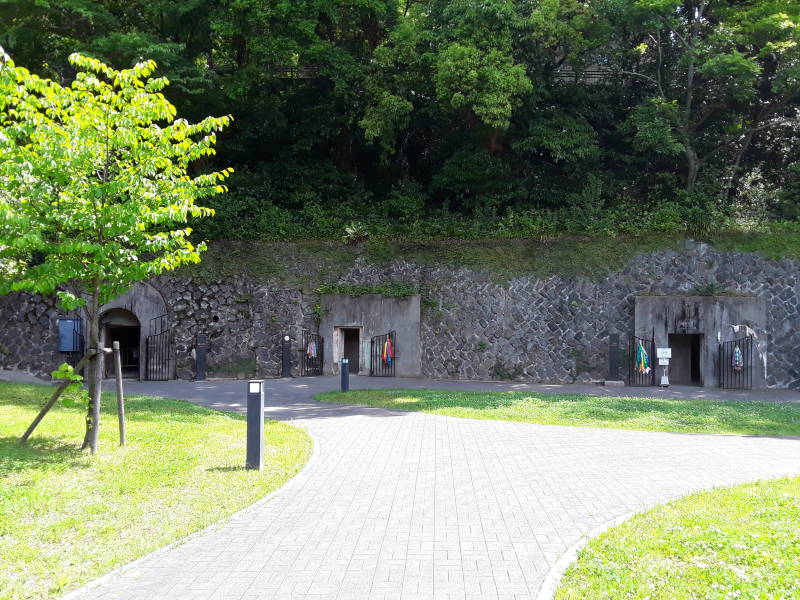
Stars and Stripes had an article in February 2012. The best description I've found of what happened is the Nagasaki Atomic Bomb Damage Records maintained by the Atomic Bomb Museum.
Atomic Bombs and Allied CryptanalysisThe first nuclear bomb was dropped on Hiroshima on the morning of August 6, 1945. The Allies had broken Japan's naval codes, but they were also reading all of Japan's Foreign Ministry traffic.
The Foreign Ministry traffic was revealing the debates within Japan's government. It also revealed how Japan's military leadership and the Emperor anticipated that the planned defense of the Home Islands would lead to approximately 20 million civilian deaths. And, they had accepted that Japan would be defeated, almost completely destroyed in the process, and the defeat would be followed by a famine likely to kill another 10 million civilians.
The nationalist movement was terrified that the Emperor would be tried for war crimes. Execution of the Emperor, descendant of the gods who created the universe, would lead to the extinction of the nation of Japan and, with it, the universe.
The diplomatic traffic was secured with an entirely different system. The Allies kept the details secret for about 50 years, to hide the fact that they had also read diplomatic secrets of other nations and continued to do so after the war. They also wanted to hide the fact that both Japan and Germany had made some design and operational errors that, if corrected, would have made Allied cryptanalysis much more difficult.
This diagram shows the route to follow. Almost all labels and descriptions are in Japanese. The light yellow areas are open to visitors. Some areas are blocked off as they're unsafe.
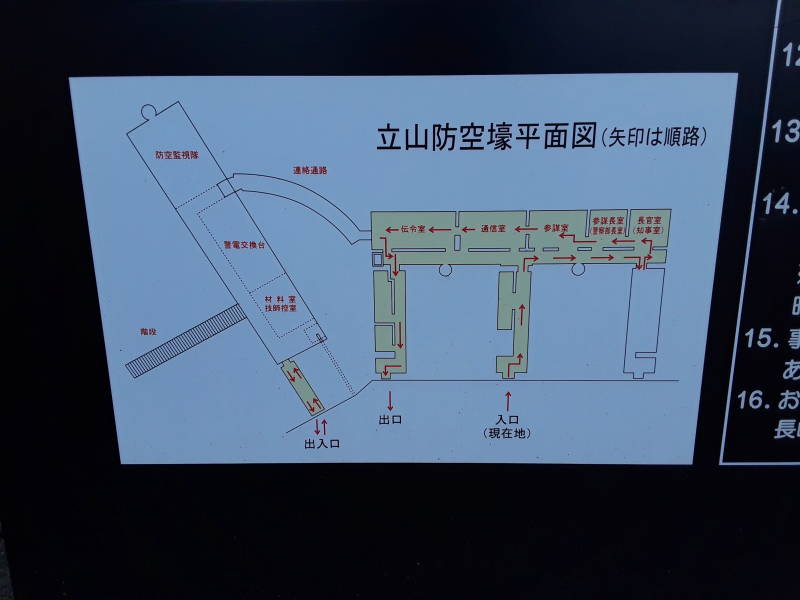
The mostly open E-shaped complex at right, with three heavy blast doors to the outside, was the military part, Nagasaki Air Defense Command.
The white circles along its main corridor are cylindrical shafts leading to the surface, as we'll see once we get inside.
The mostly white section angled off to the left was the civilian government section with offices for the Mayor and Prefectural Governor.
The multi-colored streamers are each made from a large number of origami cranes. Folding cranes as a penance or tribute has become a lasting trend both here and Hiroshima.
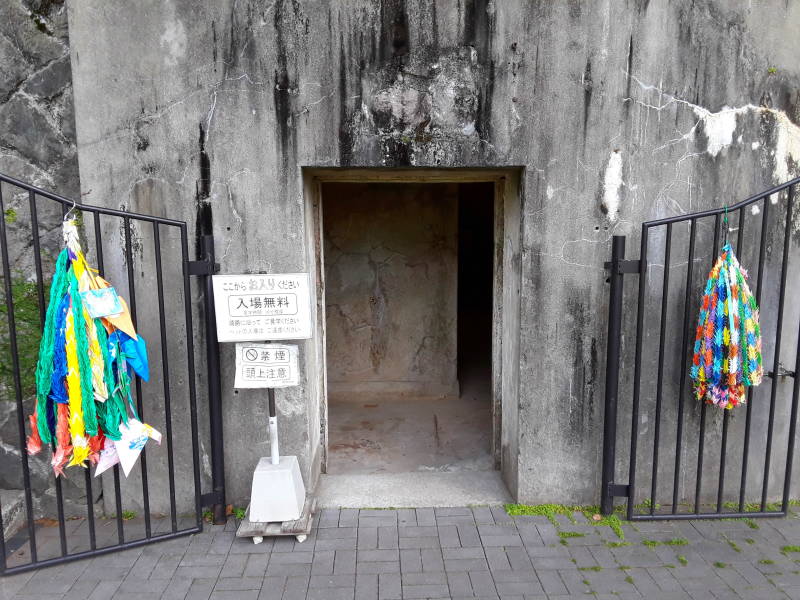
After the first nuclear bomb, the Emperor wanted to surrender. But in the following two days there were three coup d'état attempts by senior military officers, trying to prevent the surrender and take the Emperor into what the military called "protective custody".
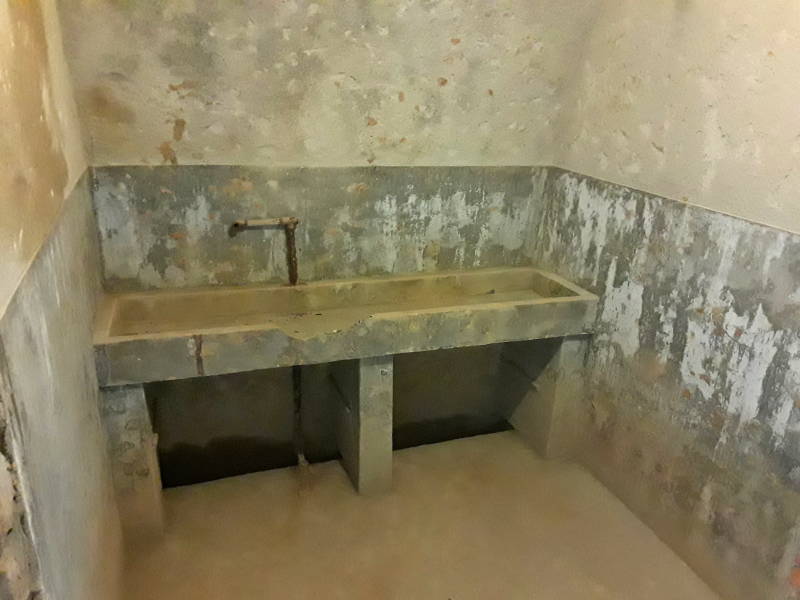
After the failed coups, senior Japanese Air Force and Navy officers ordered bombing and kamikaze attacks on U.S. fleet units. Some officers up to the rank of General took part.
Meanwhile, the allies were reading the details of the cabinet's continuing deadlock, the coup attempts, and the military plans.
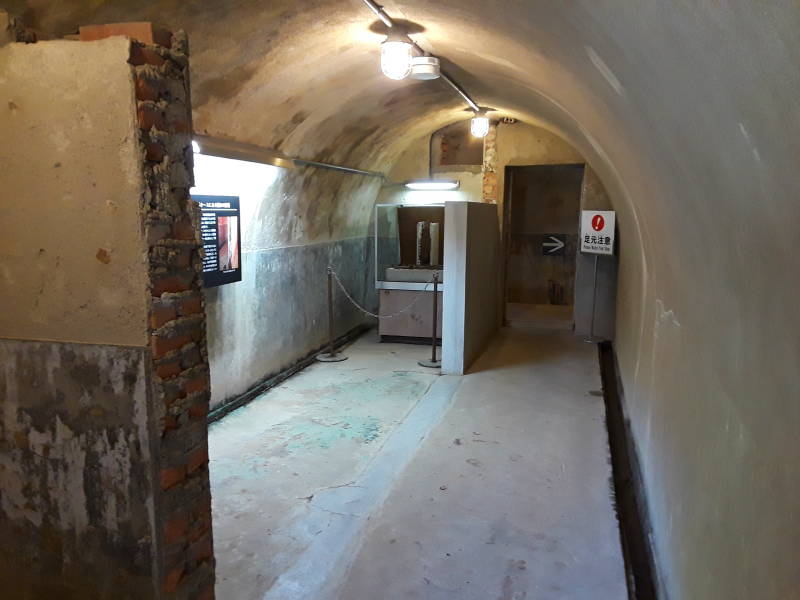
U.S. President Harry Truman had issued a statement describing the Hiroshima bombing, and warning Japan of what would follow if they did not surrender. Truman's speech was broadcast to Japan every 15 minutes from a 50,000 watt medium-wave broadcast station on Saipan.
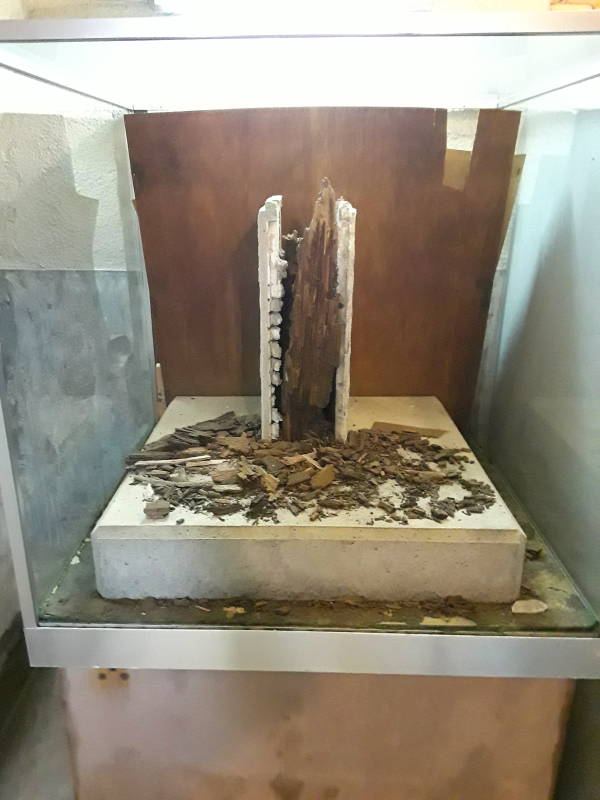
Kokura was the primary target for the second bomb. It had one of Japan's largest remaining munitions plants. Now the city has grown and it's called Kita-Kyūshū.
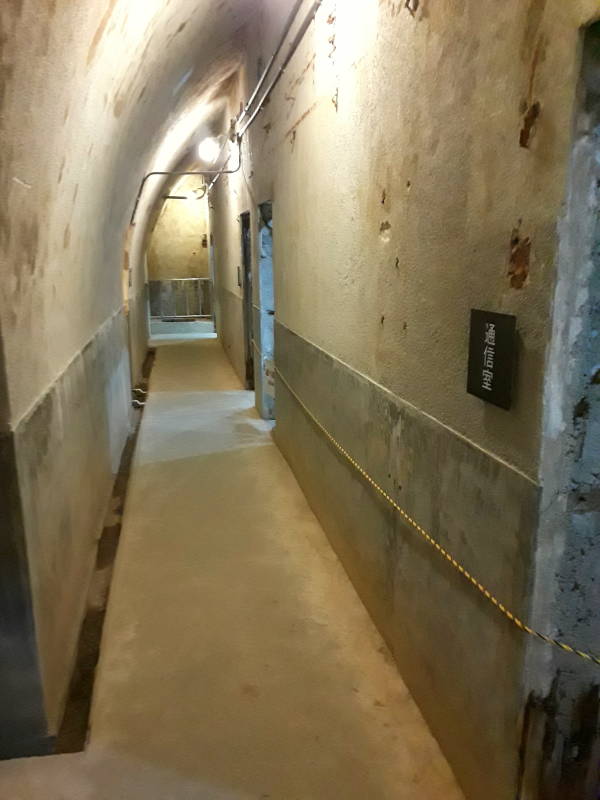
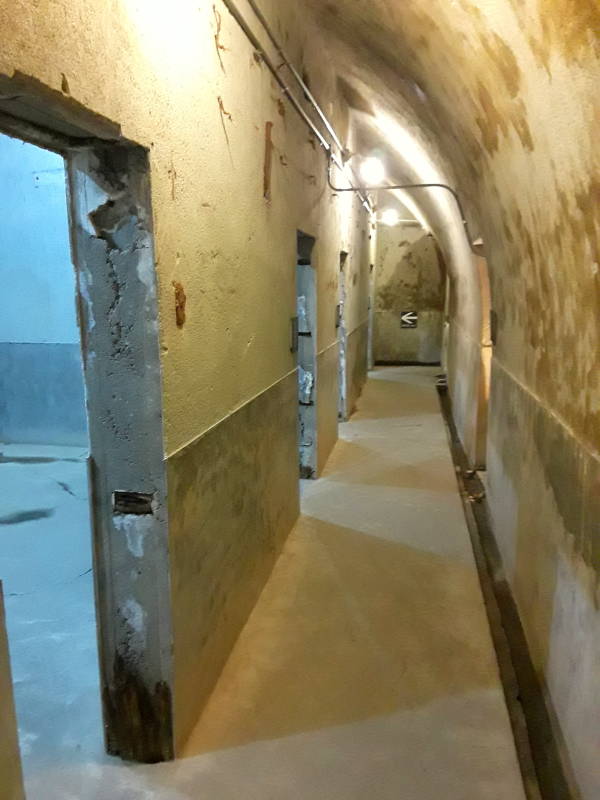
On the morning of August 9, Wakamatsu Nagano, Governor of Nagasaki Prefecture, had called for a special meeting in the air defense shelter. He wanted to discuss the bomb that had heavily damaged Hiroshima three days before.
He did not know much about the Hiroshima bomb, and had no information on military plans. But something gave him the feeling that Nagasaki would be next. Some attendees later reported that he had called the meeting to discuss evacuating civilians from the city.
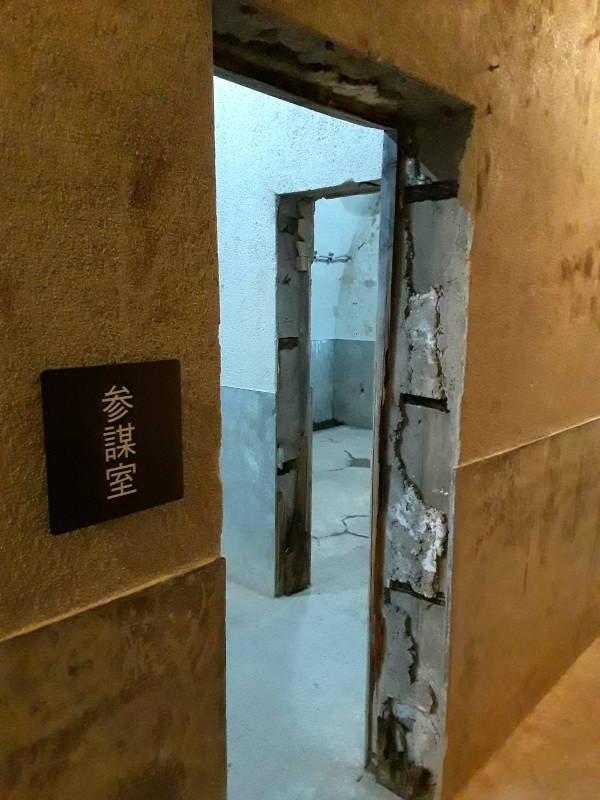
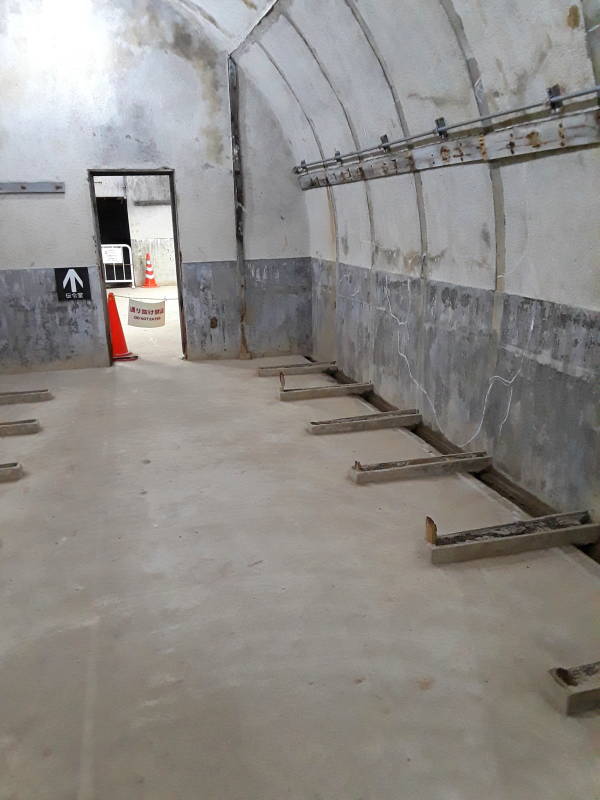
The room above was a communications center, with partitions between radio and telephone positions. The bases of the partitions and their extent up the wall are still visible. Conduits about as high as the top of the doorway carried power and signals.
Below is one of the ventilation and escape shafts.
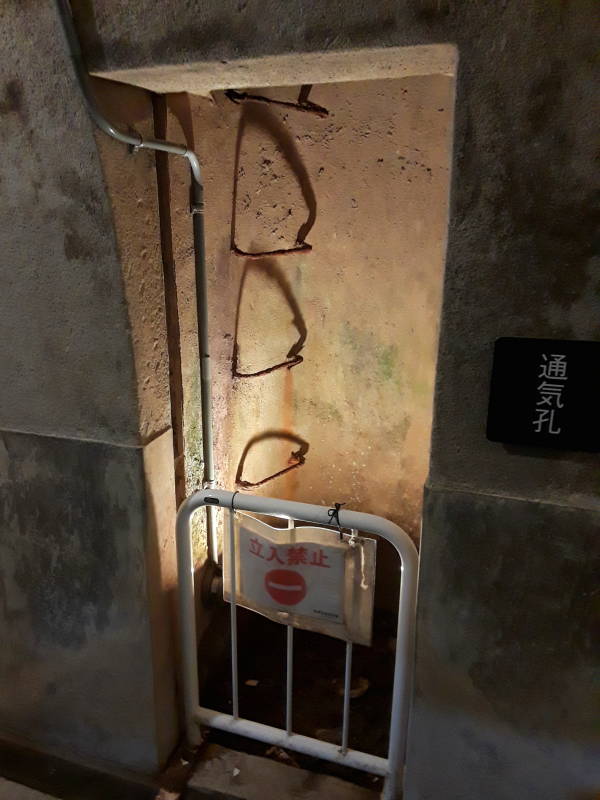
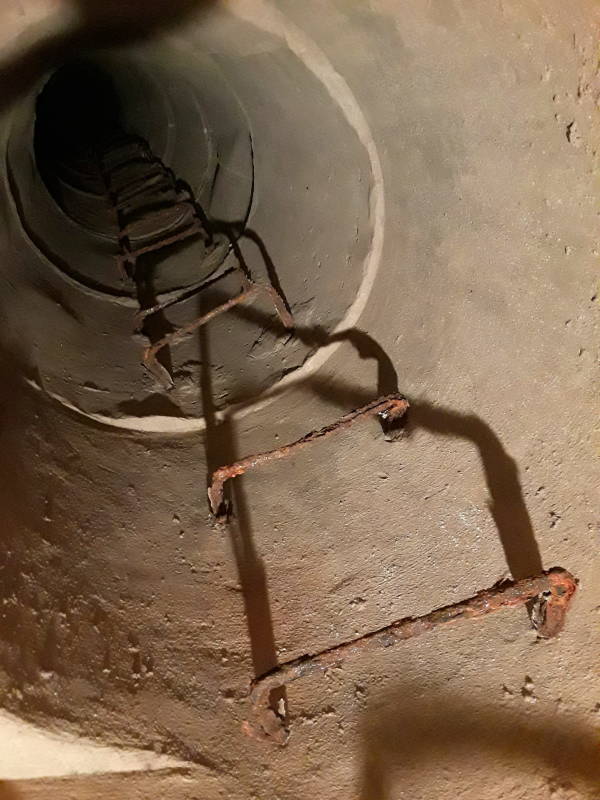
The U.S. had dropped over 63 million leaflets on Japanese cities during the preceding months, warning residents of coming attacks. The Japanese government had ordered the immediate arrest of anyone found with a leaflet.
The display case below has some of the very few English language labels, with a portable lamp and doorknobs from the Prefectural Governor's office.
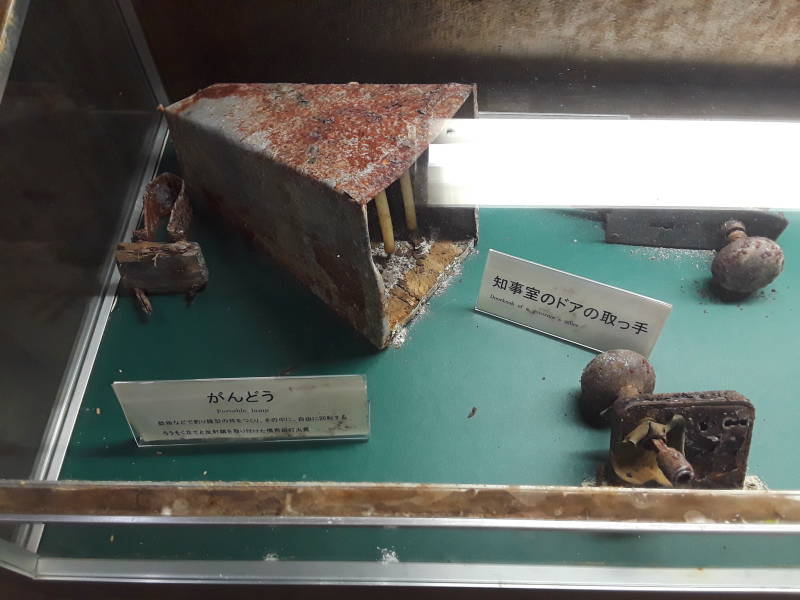
Governor Nagano had just finished his introduction at 11:02 a.m. when the lights in the shelter went out. Some of the attendees thought it was a power outage, and started to get candles. Then they heard a loud explosion outside, and a broken door admitted a surge of air as the shock wave arrived.
The second nuclear bomb had just struck Nagasaki.

There had been a fire-bombing raid by 224 B-29s the day before, striking the city of Yahata, near Kokura, the planned second nuclear bomb target. The fires at Yahata were still burning, and their smoke drifted and obscured Kokura. The nuclear mission continued to Nagasaki, the secondary target.
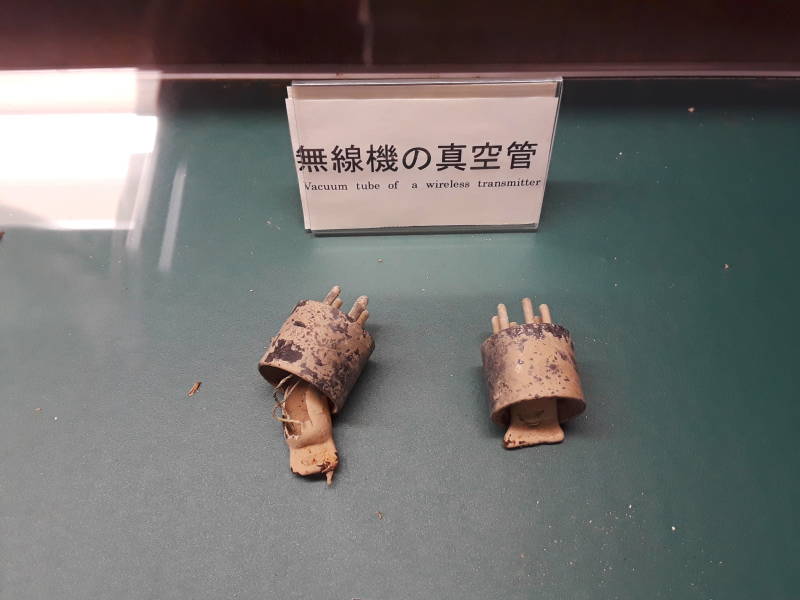
Above are some bases of what Americans call vacuum tubes, and the British call thermionic valves. How they're built versus how they work. The concept of the field-effect transistor had been described in 1926, but the first working transistor wasn't created until 1947 at Bell Labs. Signal amplification still required the large, power-hungry, and hot tubes or valves.
Below are some batteries used with telephone systems.
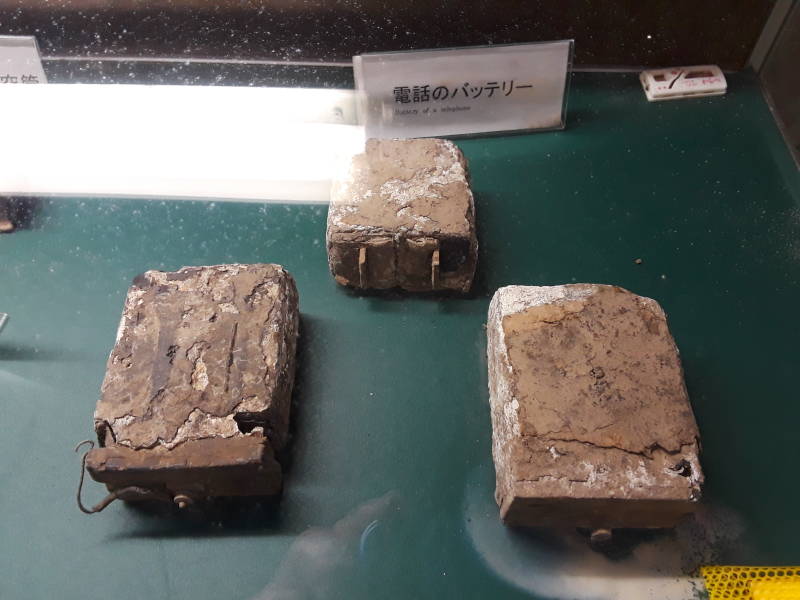
The planned aiming point was the Nagasaki Mitsubishi Steel Manufacturing and Arms Factory near the city center. This was close to where the rail yard south of today's station ended at the edge of the harbor.
The B-29 bomber had a mechanical problem before starting the mission, which prevented transferring fuel between tanks. It was therefore carrying a heavy tank of fuel that it could not use. Then the extra distance and time over Kokura in hopes of improved visibility had burned fuel.
This curving tunnel connects the military and civilian sections of the complex. It's blocked off, unsafe for visitors.
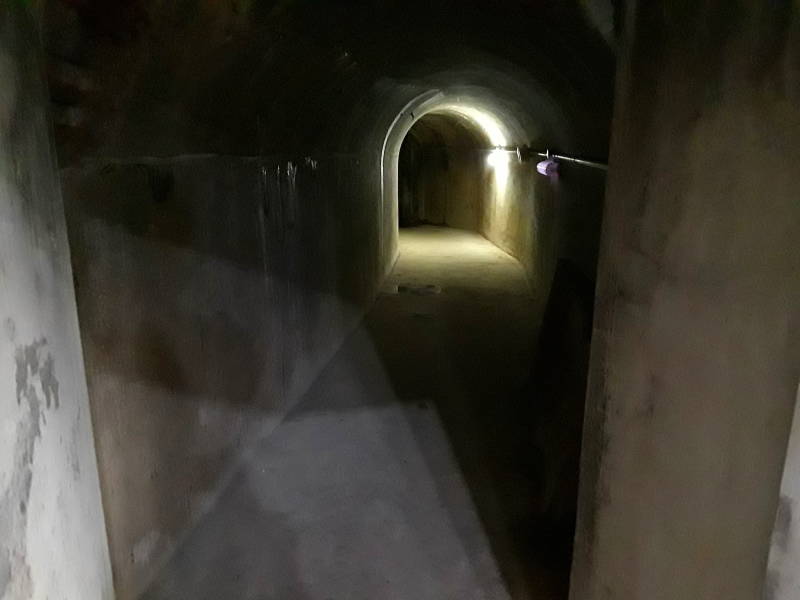
Clouds largely covered Nagasaki, and radar-guided bombing was in its infancy. The mission commander was anxious to drop the bomb, as the alternative would involve an emergency landing with an armed nuclear bomb as the plane was running out of fuel. The clouds parted briefly, allowing the bombardier to identify a landmark north of the harbor.
The result was that the bomb was dropped 3.4 kilometers to the north of the planned point, up the largest valley running north from the harbor. The harbor and city center, and this bunker complex, were much farther from the fireball, shock wave, and radiation pulse.
Some pipes, electrical conduits, and wires remain.
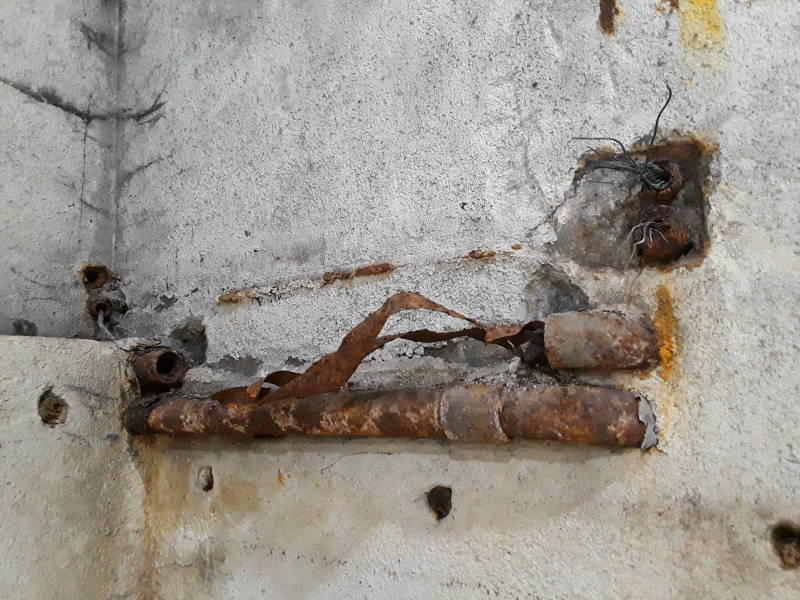
Also, Nagasaki's rugged terrain shielded much of the city's area from the direct effects of the bomb. This complex was on one side of Mount Tamazono-san. That ridge divides the northeast valley, where this bunker is located, from the north valley, where the bomb was dropped.
Here I have gone through most of what you can visit within the bunker, and come out the left-most of the three doors into the military section.
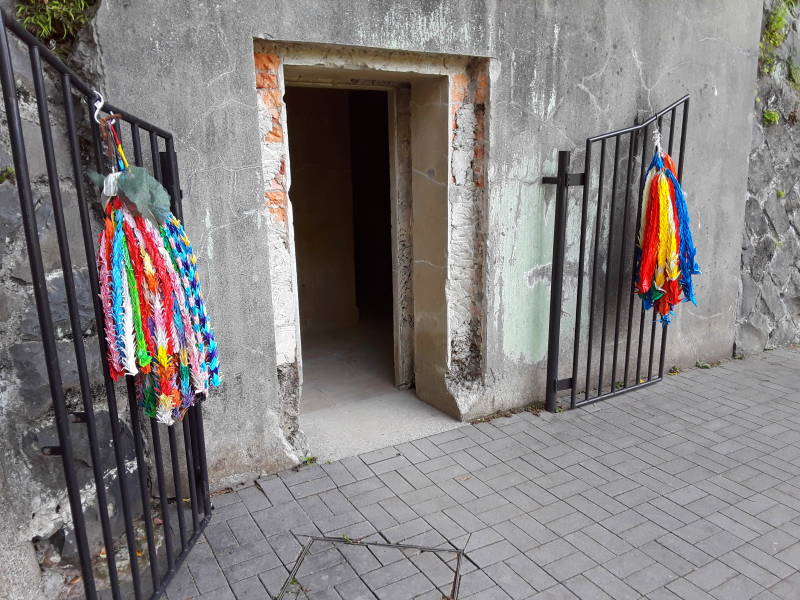
The officials and workers who were in this bunker when the bomb detonated had no idea of its effects at first. They thought that destruction was minimal and that there were few, if any deaths.
Another door, nearby, leads into the civilian section to the left. It is mostly separate, connected inside by that curving tunnel we saw above.

at Kagoshima
This was where the civilian offices were, for Nagasaki city government and the surrounding Nagasaki Prefecture. The interior walls are all gone, they once divided this section into rooms and a corridor along the left side.
This shelter was only lightly damaged by the blast. The city used the facility to coordinate relief efforts.
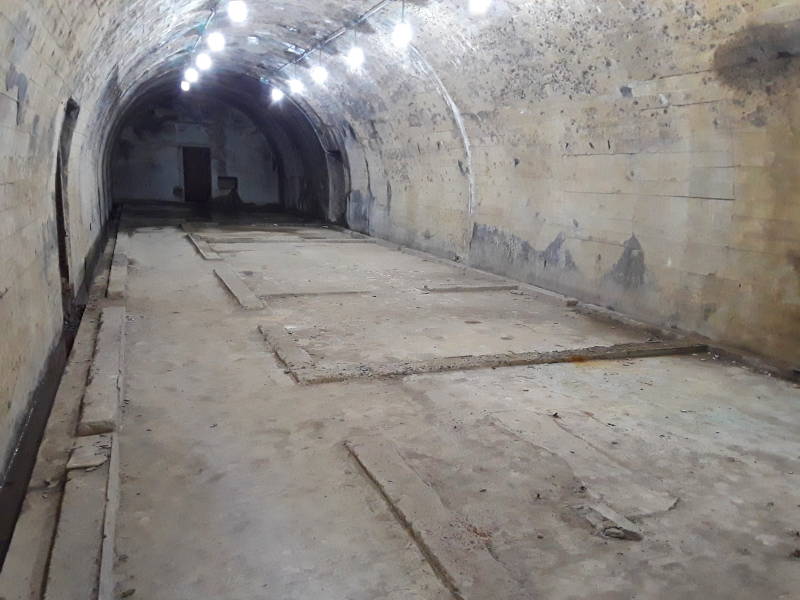
Next I'll visit the Peace Park, where the bomb was dropped.
The above is specific to Nagasaki. Or maybe you want to explore other places in Japan.




































